|
Locomotive-Clockworks |
|
about Battery-Motors |
|
Since 1938 (AA-Gun) Bühler produced /
supplied the
clockworks for Biller Toys. Bühler-advertising from the journal "Das
Spielzeug" as of April 1954. |
|
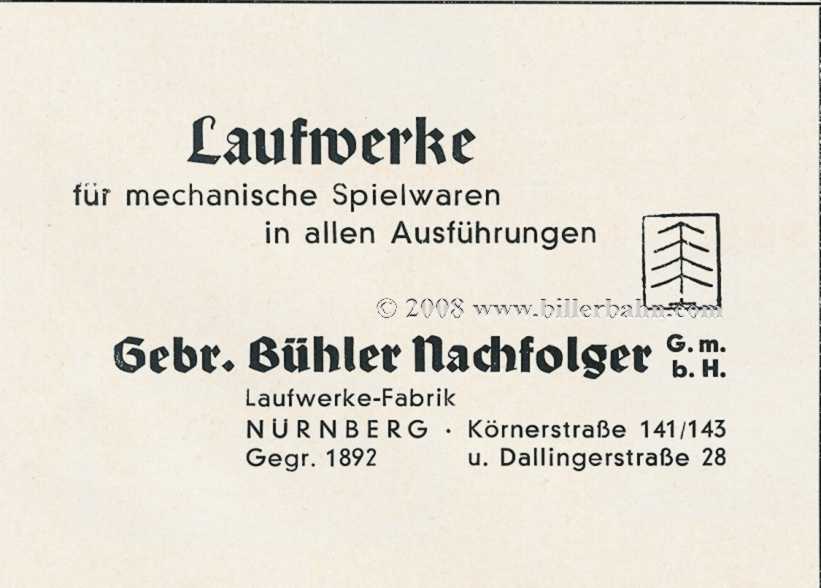 |
| |
|
The clockwork in its 1st version. Green cover, 2 gears,
missing the fixation holes for the switch-arm and the corresponding punch
point. The small spring on the left hand side makes / helps the switch
procedure to be completed automatically after the mechanism has passed the
middle dead position. Additionally the spring fixes the end position |
2nd version clockwork - here from a 013
Diesel. On this picture you can see at least one of three fixation holes
- and the corresponding punched point on the The bolt including spring
still supports the switch procedure - but actually was no longer
necessary.
|
|
.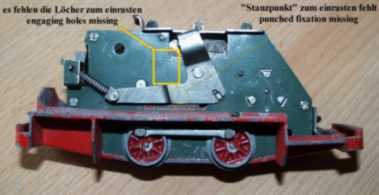
|
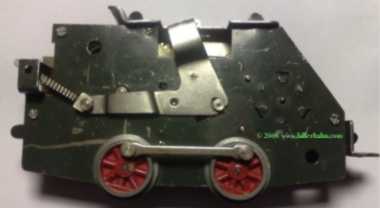 |
| |
|
as described before, however now for a 500 steam loco. The
difference is the upper fixation tin plate, which is formed more
roundish to fit underneath the round boiler. |
Special form - right hand side
hand-painted at the bottom part |
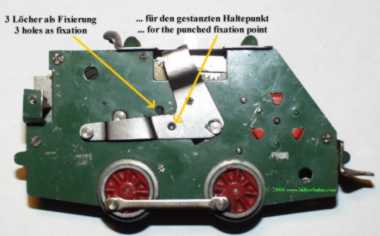 |
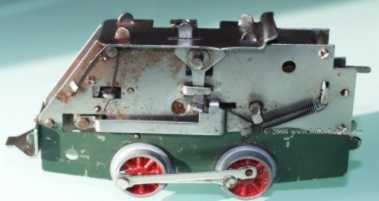 |
| |
| clockwork in bright-green -
about
1960 |
direct comparison. Both
clockworks also available in bright-green. |
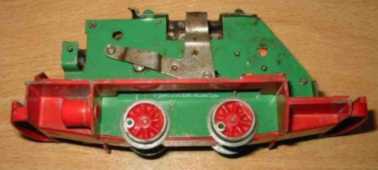 |
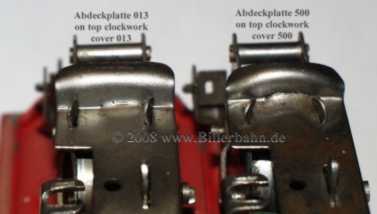 |
| |
|
and finally the
clockwork in red - for a 013 Diesel. The height of all these clockworks was 48,75 mm (measured
between the axles to the top of clockwork cover). All top covers of the
green clockworks were blank, last version clockworks also show red top tin
plates. The tin plates of the clockwork (cover) were initially
without any surface structure (were plain tin) ... |
... just contrary to the
clockworks after the mid 60ies - these were matrix dotted - in- and outside. |
|
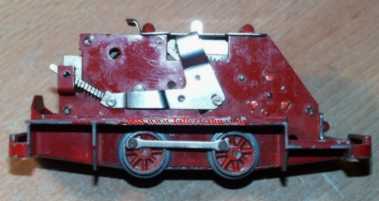 |
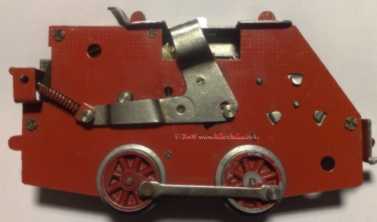 |
| |
|
Also available in Black. |
The switch-knob - serving the above mentioned - at the rear
end slanted - clockworks. The guiding spike has a length 18 mm for the green
and bright-blue switches. |
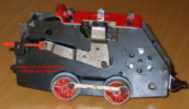 |
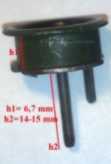 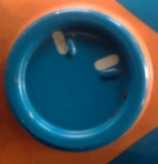 |
| |
|
Clockwork covers were NEVER available in bright blue |
| |
|
Starting in 1962 the clockwork shapes was changed. Height
now was 46 mm - and was a necessary result to serve the steam loco 550 / 1550.
The rear slant "vanished" - thus providing space for the cabin
batteries. These clockworks are known with and without matrix
dotting. |
The later clockwork - on top view. The
former angular tin plate was replaced by straight plate. As of now the
spring was covered. |
|
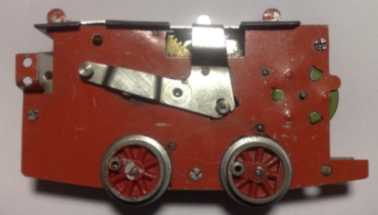 |
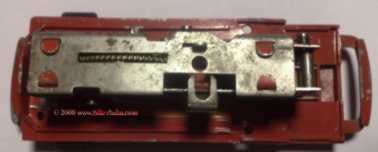 |
| |
|
The guiding spike was shortened to 14 - 15 mm .. |
... and the rivet points were placed at
other positions. |
|
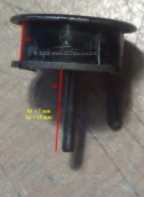 |
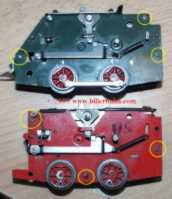 |
| |
|
Guiding spikes in comparison: switches with spike No. 2 - 4
with a length of 12 to 15 mm were too short for the hood of the Diesels and
could easily be removed top wards. |
Therefore there are some green clockwork locos and most of
the coloured Diesels known to have such a distance washer (sometime two
and even 3
washers) to prevent the switch to be removed top wards - unless the guiding
spike had a length of 18 mm. |
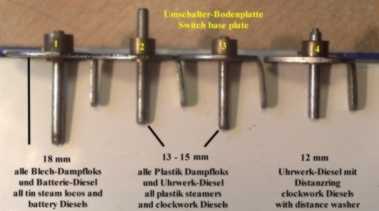 |
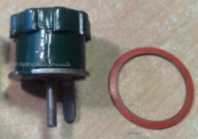 |
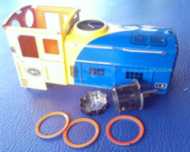 |
| |
|
Internals of the early clockwork -
without the spring) |
|
|
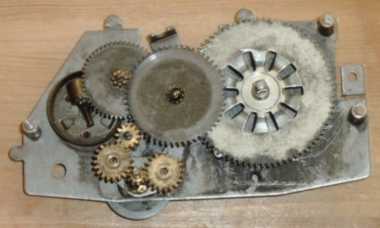 |
about Battery-Motors |
|
generated: Christmas 2008 |
last update:
Autumn 2014
|